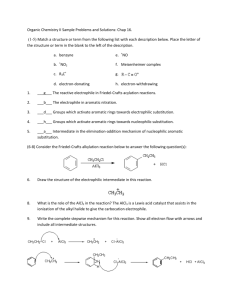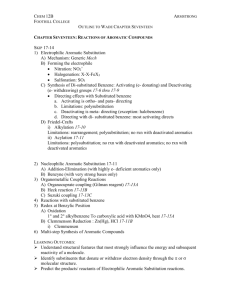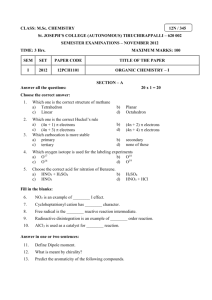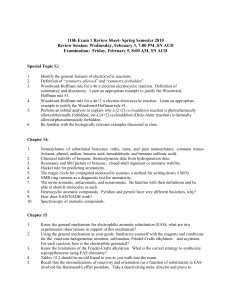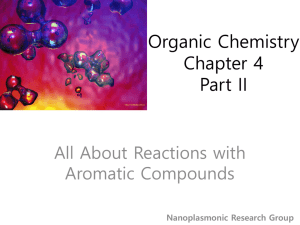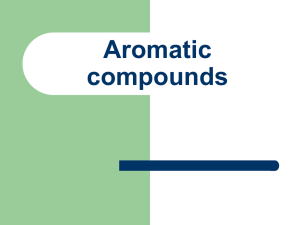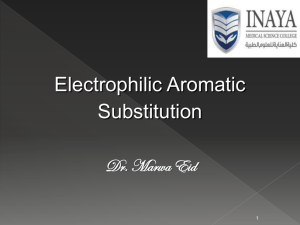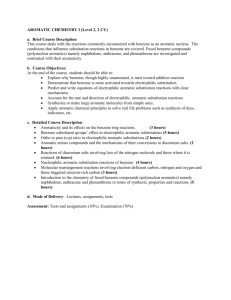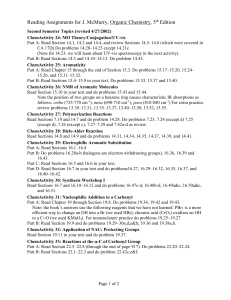CHE 2202, Section 101 Spring 2014 Exam IIA Name: Honor Pledge
advertisement
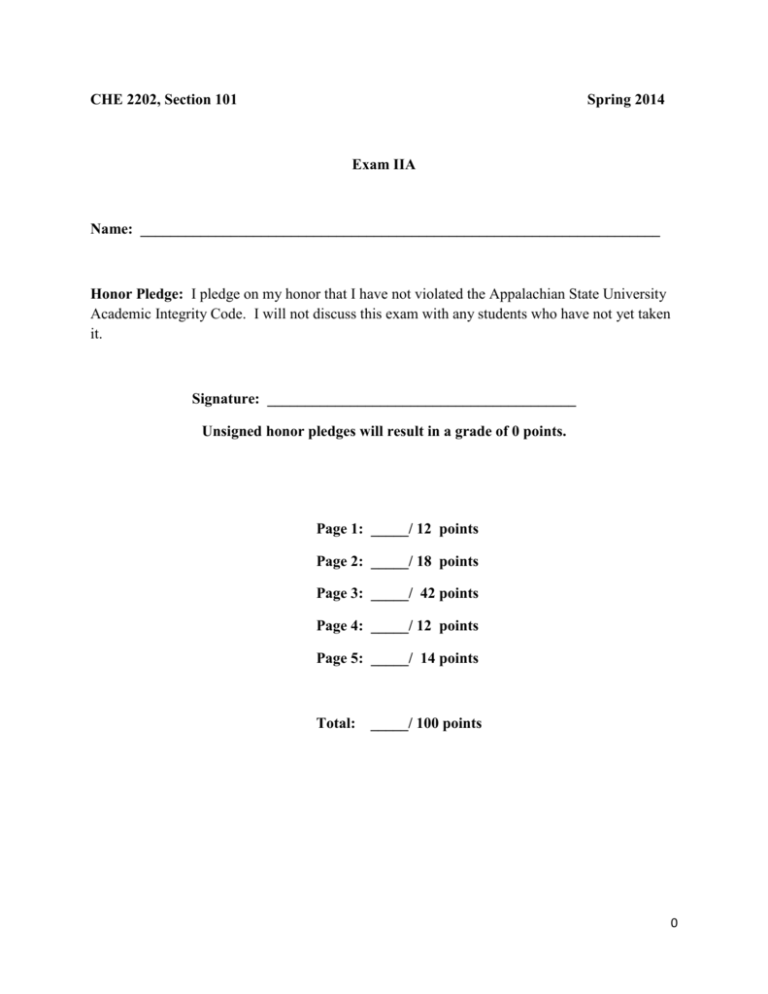
CHE 2202, Section 101 Spring 2014 Exam IIA Name: _____________________________________________________________________ Honor Pledge: I pledge on my honor that I have not violated the Appalachian State University Academic Integrity Code. I will not discuss this exam with any students who have not yet taken it. Signature: _________________________________________ Unsigned honor pledges will result in a grade of 0 points. Page 1: _____/ 12 points Page 2: _____/ 18 points Page 3: _____/ 42 points Page 4: _____/ 12 points Page 5: _____/ 14 points Total: _____/ 100 points 0 1. (4 points) Which of the following molecules cannot be oxidized using Dess-Martin periodinane in CH2Cl2? Circle the correct answer. 2. (3 points) Below is a reaction coordinate diagram of the nitration of benzene. Using this same reaction coordinate diagram, compare the nitration of benzene to ethylbenzene by drawing a dashed line (-----) to illustrate the reaction pathway for ethylbenzene. 3. (5 points) Using appropriate resonance structures, explain the meta-directing deactivating character of benzoic acid. / 12 points 1 4. (4 points) Below are four steps, three of which are part of the mechanism of a typical electrophilic aromatic substitution, and one of which is not. Put the three steps of the mechanism in order by writing 1, 2, or 3; identify the step that is not part of the mechanism by writing n/a. _____ Electrophile generation by coordination to an acid. _____ Deprotonation and re-aromatization _____ Nucleophilic attack of the pi electrons of the aromatic ring. _____ Coordination of the acid to the aromatic ring. 5. (4 points) Rank the following by their reactivity in nucleophilic aromatic substitution. 1 = most reactive, 4 = least reactive. 6. a. (4 points) Use curved arrows to illustrate the formation of benzyne in the following reaction. b. (3 points) Benzyne is much higher in energy than 2-carboxylbenzenediazonium, yet this reaction is very exergonic and favorable. What drives this reaction forward? c.) (3 points) Benzyne has never been isolated, yet we know it does form. How have chemists determined that it is indeed formed, if only fleetingly? 2 / 18 points 7. (42 points) Fill in the boxes with the missing reactants, reagents, or major products for each reaction. If the reaction will not occur, write “no reaction” in the box. / 42 points 3 8. Draw mechanisms to illustrate the following transformations. a. (6 points) b.) (7 points) / 13 points 4 9. (7 points)How would you prepare the following target compound from benzene? 10. (8 points) Devise a synthetic route to the target below using starting materials from the chemical bank, and any transformation that we have learned. Note: you will not use all the chemicals from the chemical bank! 5 / 15 points
